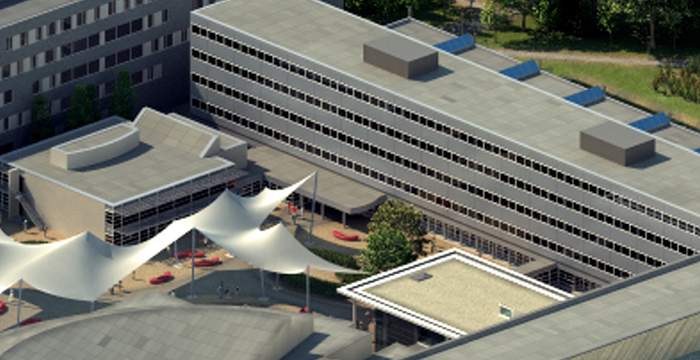Stephan van Gils holds the chair for Nonlinear Analysis in the department of Applied Mathematics at the University of Twente.
Short CV
born on 1 November 1954
1973-1979: Mathematics at the Free University Amsterdam
1979-1984: PhD in Mathematics at the CWI in Amsterdam (advisor Odo Diekmann)
1985-1987: Postdoc at the Free University Amsterdam with Jan Sanders
1985 : Fulbright Fellowship, Postdoc at Michigan State University with Shui-Nee Chow
1986 : Postdoc at the University of Houston with Marty Golubitsky
1987-2000: Assistant Professor at Dept. of Applied Mathematics, University of Twente
2000-2004: Associate Professor at Dept. of Applied Mathematics, University of Twente
2004-2009: Programme Director Applied Mathematics
2004-........: Professor of Nonlinear Analysis, University of Twente
2009-2020: Chair Applied Analysis, University of Twente
2016-2022: Head of Department Applied Mathematics
2018-2020: Chair of the cluster Nonlinear Dynanics of Natural Systems (NDNS+)
Expertise
Neuroscience
- Neuron
- Epilepsy
- Parkinson's Disease
- Seizure
- Behavior (Neuroscience)
Computer Science
- Models
- Algorithms
Mathematics
- Transmission Delay
Organisations
Delay differential equations
Delay differential equations are characterized by the fact that the rate of change of the present state depends on the history of the state. There are many examples, notably in the field of biology, but also in physical systems and economy. Over the past 30 years the general theory for this class of equations has been shaped much in the spirit of the qualitative theory for ordinary differential equations.
When the state space is the n-dimensional Euclidian space, a complete description of the dynamics in the neighborhood of an equilibrium is well known, including the normal form equation on the center manifold.
The goal is to extend this to cases where the state space is infinite dimensional and the linear part of the equation contains an unbounded operator like diffusion.
Mathematical neuroscience
Neural field equations where introduced by Amari, Wilson and Cowan in the seventies of the previous century. It is a continuum description of electrical activity in the brain based on averaging over both space and time. In terms of mathematics it is an integro-differential equation and due to the transmission delays and synaptic handling it is an example of an abstract delay differential equation.
The goal is to link this equation to human data. This is an extremely challenging inverse problem where we try to identify the local and nonlocal connectivity and the (nonlinear) sigmoidal gain function from recordings of the brain.
Epilepsy
It is a challenging problem to identify the part of cortex that must be resected, the epileptic zone, in order to stop focal epileptic seizures. Our goal is to build a network of dynamic nodes, based on human cortical SPES (Single Pulse Electric Stimulation) and to determine from the dynamics of the network the epileptic zone. This research is done in collaboration with the University Medical Center Utrecht (UMCU).
Parkinson’s disease
Parkinson’s disease a neurodegenerative disorder. When medication does not relieve the symptoms, deep brain stimulation (DBS) is one of the options where the subthalamic nucleus is stimulated continuously at 130 HZ. In the first decade of the century Peter Tass promoted another way of simulation, the so called coordinated reset (CR) stimulation.
In cooperation with the medical centers of Nijmegen and Maastricht, we investigate the plasticity rules that govern the dynamics of the basal ganglia, make simulation models for the basal ganglia that incorporate these rules, and perform a CR-trial on Parkinson patients.
Publications
2024
2023
2022
2021
2020
Research profiles
Affiliated study programs
Courses academic year 2024/2025
Courses in the current academic year are added at the moment they are finalised in the Osiris system. Therefore it is possible that the list is not yet complete for the whole academic year.
Courses academic year 2023/2024
Address

University of Twente
Zilverling (building no. 11), room 3042
Hallenweg 19
7522 NH Enschede
Netherlands

University of Twente
Zilverling (building no. 11), room 2090
Hallenweg 19
7522 NH Enschede
Netherlands
University of Twente
Zilverling 3042
P.O. Box 217
7500 AE Enschede
Netherlands